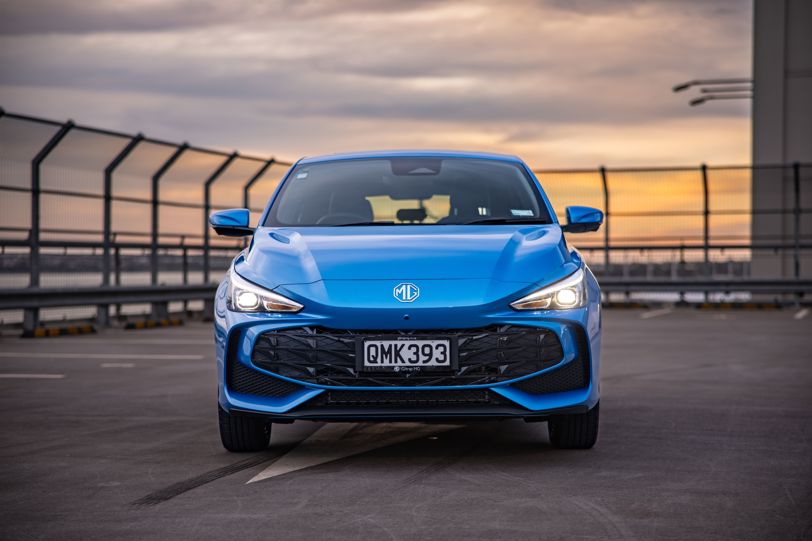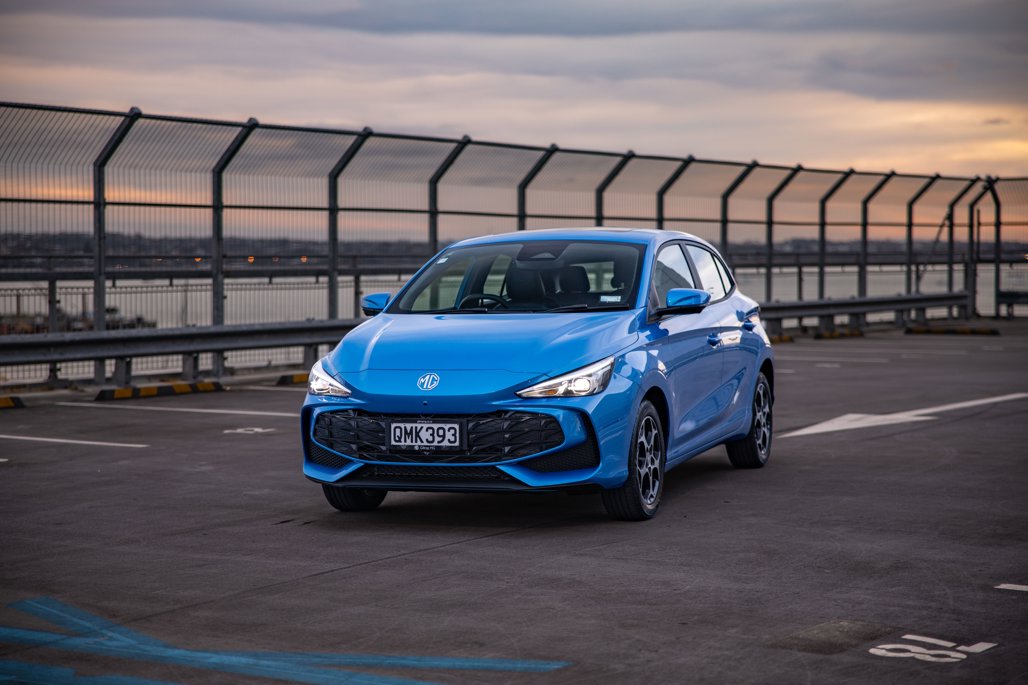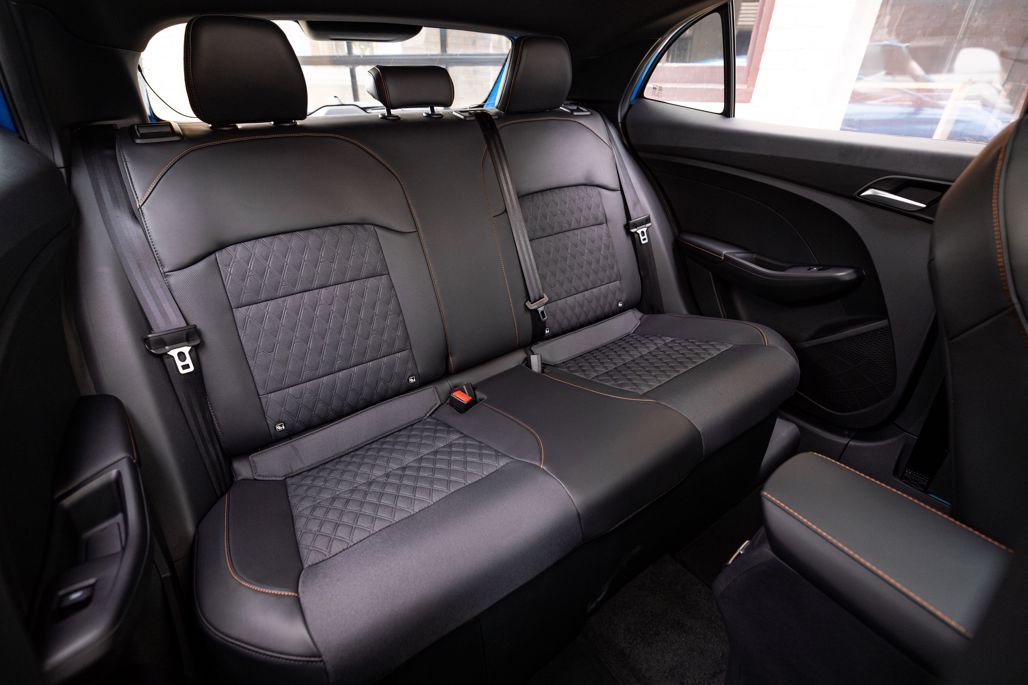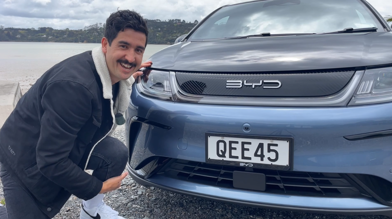The modern (Chinese) incarnation of MG came in hard with pure-electric cars for New Zealand from the outset: the ZS EV rode the wave of the Clean Car Discount from 2021 and last year the high-tech MG4 scooped up a multitude of Car of the Year awards, including ours.

Now, MG NZ is launching its all-new MG3 hatchback, which includes the option of the brand’s first-ever non-plug-in hybrid powertrain.
This might seem back-to-front. The natural technology walkup goes from petrol-electric hybrid to the plug-in stuff. But looking at the state of the Kiwi new-vehicle market right now, back-to-front might be exactly right.
It’s tough times for the recession-hit local industry. Light commercials are holding station, but the passenger/SUV market is down 18 per cent year-to-date. And EVs are absolutely tanking, thanks to the combination of a grim economy and the removal of the Clean Car Discount at the start of this year; there are thousands of unsold plug-in cars in yards all over the country.

“The NZ car market is contracting,” says MG NZ country manager Arek Zywot. “But in this contracting market, we see an opportunity from ICE [internal combustion engine] products and hybrids. ICE is the largest segment in NZ in terms of volume and hybrid is the only segment that is growing.”
Enter the third-generation MG3, a value-for-money supermini that offers a choice of conventional petrol or hybrid power.

It’s a fair step up from the outgoing model’s $20,990-$22,990 to the new-generation’s $25,990-$31,990 – hard to ignore when a low price was so much a part of the purchase for that second-gen car. But the new MG3 is a brand-new model on a brand-new platform… with some pretty clever technology.
There are two specification levels, shared across the two powertrains: Excite and Essence, both available with ICE and what MG calls “Hybrid+”.

The $25,990 Excite and $27,990 Essence share an 81kW/142Nm 1.5-litre petrol engine and continuously variable transmission. The $29,990 Excite Hybrid+ and $31,990 Essence Hybrid+ have a more sophisticated Atkinson Cycle 1.5-litre petrol engine with a hybrid system that employs a unique 3-speed transmission. Combined power is an impressive 155kW and the rest is… a bit complicated. More in a minute.
Excite and Essence equipment levels are basically the same across the two powertrains, with a couple of tweaks. Standard across the range are a 7-inch digital instrument cluster and large 10.25in infotainment display, adaptive cruise, wired phone projection, the full suite of active safety features, intelligent headlight control and 16-inch alloy wheels.

Key upgrades for the Essence include a 360-degree camera (Excite still gets a reversing camera though), LED headlights, rain-sensing wipers, sunroof, keyless entry, navigation and MG’s iSmart mobile-phone app connectivity.
The Excite ICE is the only model with manual air-con; the Excite Hybrid+ (and everything else) offer climate control. And on the Essence Hybrid+ only, you can eschew the standard black interior trim for white.

We haven’t yet sampled the standard MG3 petrol; a proper review is imminent. But we did spend a few hours in the Essence Hybrid+ during MG NZ’s media launch day and it’s a pretty interesting exercise in hybrid technology.
The good news is that it’s not difficult to drive. Just get in and go, like a normal car.

But if you have an interest in how your vehicle is operating, there’s plenty to think about. The petrol engine is not the same one you get in the ICE model: it’s an Atkinson Cycle unit, which uses a delayed intake stroke to improve efficiency, at the expense of some low-down power (which you get back from the electric component, of course).
The 1.83kWh battery is quite large for a hybrid of this type; a Toyota Yaris carries just 0.77kWh, for example.

The Hybrid+ system works in multiple modes, largely depending on road speed. Up to 30km/h it’ll mostly run as an EV. Between 30-80km/h, the wheels will be driven by the electric motor, with the petrol engine charging the battery (“series” operation). Beyond 80km/h the engine and electric motor will be working together to drive the wheels (making it a “parallel” hybrid), and if you happen to find yourself at 120km/h-plus, the engine will be actively charging the battery.
So it has quite a bit in common with the likes of Toyota’s parallel hybrid technology, but also with the series operation employed by Honda’s e:HEV powertrain and Nissan’s e-Power models. And like we said, you don’t have to give any of this a thought if you don’t want to, but it is interesting to feel the modes changing at times.

Not that it’s super-obvious, because the MG3 Hybrid+ is an impressively refined little car. It’s super-smooth around town and plenty perky when you need it to be, with 155kW combined power on tap with all systems active. It’ll hit 100km/h in 8sec, which is pretty decent for a decidedly non-sporty small hatch.
MG doesn’t quote a combined torque figure (neither does Toyota for its hybrids), but if you’re a number completist the petrol engine is 75kW/128Nm, the generator 45kW/60Nm and the electric traction motor 100kW/250Nm. And no, you can’t simply add them all together.
The Hybrid+ is considerably more thrifty than the ICE, of course: 4.3l/100km versus 6.0l. But the hybrid does require 95-octane fuel, whereas the ICE runs on cheaper 91.
You can adjust the regen between three levels; the most aggressive actually gives you something close to one-pedal driving, although it isn’t quite strong enough to bring the car to a complete stop in urban traffic.
The interior plastics are pretty hard, but there are some interesting textures and the all-digital displays look very modern. As with the MG4, some of the graphics are a bit hard to read because they’re tiny and quite complex, but the layout is logical and overall, it looks like a class act.
Phone projection takes over the widescreen infotainment display nicely, although once active it locks out the climate-control shortcut buttons; you have to return to the car’s own OS screen to do any of that.
No penalty in luggage space for the Hybrid+: both models offer 293 litres, which is decent by class standards. But the single-piece rear-seat backrest (no split) is a bit of a downer for a small hatch. As is the lack of reach adjustment for the steering, although to be fair we had no issue achieving a comfortable driving position pretty quickly.
Potential rivals for the MG3 include the Honda Jazz, Suzuki Swift and Toyota Yaris.
MG isn’t sure whether the ICE or Hybrid+ will be the headline act in MG3 volume, but then that’s the idea: covering the bases as much as possible between ICE and hybrid, and hoping the MG3 hits the spot. Interesting we’re back focusing on a conventional hatchback when so much of the small-car market is about SUVs, but MG has already proved that need not hold the right car back, with the MG4.
ENGINE: 1.5-litre petrol 4-cylinder or 1.5-litre Atkinson Cycle petrol 4-cylinder with hybrid system including 1.83kWh battery and electric motor POWER: 81kW/142Nm (petrol) or 155kW combined (hybrid) GEARBOX: Continuously variable (petrol) or 3-speed hybrid CONSUMPTION: 6.0-4.3l/100km PRICE: $25,990-$31,990.


















